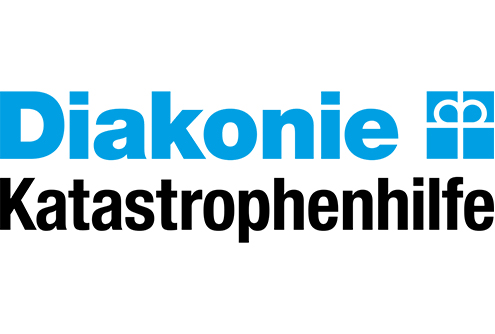This guide provides practical advice on how to ensure local actors are part of climate change projection processes.
Through the meaningful participation of local actors, especially communities most at risk in accessing and using climate projection data, their decision to adapt, or plan for, emerging disasters and complete development actions are significantly more informed. The approach to this climate risk narrative process is guided by GNDR’s overarching risk-informed development approach.
By presenting information on key concepts and theory, as well as practical tools and additional resources, the guide aims to ensure a clear process for localising climate projections. Users will be able to:
- Understand key climate concepts and the different sources of uncertainty in managing climate change risk
- Contextualise climate change related risks among other social, economic and governance drivers of risk
- Localise climate change related risks and develop ways to manage these risks
- Establish the partnerships with national meteorological agencies and national research institutions required to address climate-related risks
- Make informed decisions on climate change
What does localising climate projections mean and why is it important?
There are many uncertainties in climate change projections. There is uncertainty in how the atmosphere will react to changing conditions, uncertainty in natural events such as volcanic eruptions and uncertain information from the different climate projection models currently used. Perhaps, the biggest uncertainty is due to the future changes in how much greenhouse gases we produce. Putting these, and other uncertainties together, means we have a range of possible climate futures we need to consider.
However, there are some things we can have confidence in about the future climate. Given ongoing human activity, the climate will get more extreme, leading to more extreme weather events such as hotter days, intense rainfall (flooding or extreme storms), interspersed by periods of no rain leading to increased periods of drought.
Globally, climate-induced disasters accounted for 90 per cent of all major disasters between 1998 and 2017. Climate change threatens to annihilate the development efforts that the world has made. The Intergovernmental Panel on Climate Change (IPCC) reports that “Human-induced climate change, including more frequent and intense extreme events, has caused widespread adverse impacts and related losses and damages to nature and people, beyond natural climate variability. Some development and adaptation efforts have reduced vulnerability. Across sectors and regions the most vulnerable people and systems are observed to be disproportionately affected. The rise in weather and climate extremes has led to some irreversible impacts as natural and human systems are pushed beyond their ability to adapt.”1
Extreme weather events and rising sea levels are the new norm and the frequency and intensity of the sudden-onset of hazards is predicted to increase, and worsen the impacts of slow-onset hazards. Patterns of weather and rainfall will change around the world with droughts becoming more common and severe in some places, and floods in others. Environmental degradation seen in deforestation, loss of biodiversity, deterioration of drainage patterns, unscientific development and other factors, is increasing risks to society and the land. Climate and environmental risks are clearly priority challenges that drive risk in a multitude of ways: rising sea levels, desertification, wildfires, water scarcity, extreme weather, crop failures, displacement, migration and increased risk of different types of conflict.
Another important uncertainty is how global climate changes translate to local changes. Locally, climate-induced disasters are happening at the rate of one per week, mostly out of the international spotlight. Whilst the IPCC has previously highlighted that limiting global warming to 1.5°C goes hand-in-hand with reaching world goals set for sustainable development and eradicating poverty, its 2022 report sets out the prospect of maintaining 1.5°C is ‘far off track’ and to achieve this would require that ‘the world should peak greenhouse gas emissions in the next three years’.2
Indeed, the local impacts of climate change mean that disaster losses are rising. The last 20 years have seen a rise of 251 per cent in direct economic losses from climate-related disasters, and it is the people most at risk who are often disproportionately impacted – particularly those in the global south. For communities most-at-risk, climate-induced disasters devastate lives, livelihoods, natural resources and intensify complex risk and increase vulnerability.
Local actors, including community members most at risk of disasters, local government representatives, community leaders and civil society organisations are at the frontline of these crises. They know the multiple dimensions of risk communities face and know what the most effective resilience-building activities are. Their inclusion in planning, implementing and reviewing policies and actions that prevent complex risk, leading to complex disasters, is vital. However, 84% of local actors report not being included in assessing threats, preparing policies and plans, and taking action to reduce threats.3
For local actors to play their critical role, they need access to climate projections to ensure they are adequately risk-informed in their planning, implementation and review of policies and actions to prevent, mitigate and prepare for complex crises. It is essential to reduce the adverse impacts of climate change on communities most at risk by putting in place such actions.
Current decision-making processes by local actors are hindered by climate change as their traditional knowledge on the environment around them is challenged. They need to combine this knowledge with the knowledge of experts on climate change in order to make informed choices on what actions to take in their community.
Localising climate projections means ensuring climate information – that is currently global, highly technical or academic, in languages not understood or not easily accessible (an individual does not know how to access it or is intentionally stopped from accessing it) – becomes easily available to local actors so that they can adequately plan for development and contingency actions in crises. Local actors should have the time, space and capacity to identify solutions that are affordable, relevant, impactful and sustainable within their communities.
By localising climate projections, it is not intended for weather forecasts to become more local in their geographical coverage. Given the nature of an element of unpredictability in weather forecasting, especially for the longer-term and in the midst of changing climate leading to extreme weather events, a local forecast (i.e. in a specific village or district) is not necessarily more accurate.
It is also not intended to ensure all local actors are climate experts. Where capacity exists we capitalise on it and where capacity can be strengthened efforts should be prioritised to achieve it. But different roles, perspectives, knowledge sources and expertise are required within the entire process. It is not intended to replace scientific knowledge with local, indigenous or traditional knowledge. There is a place for both academic or technical and empirical knowledge. Further, local actors should not work alone. There is a need for national actors to contribute to the overall process of localising climate projections by collaboration with local actors.
Through this resource, and through our ongoing influencing actions, GNDR calls for localisation of climate data and projections to build community resilience.


